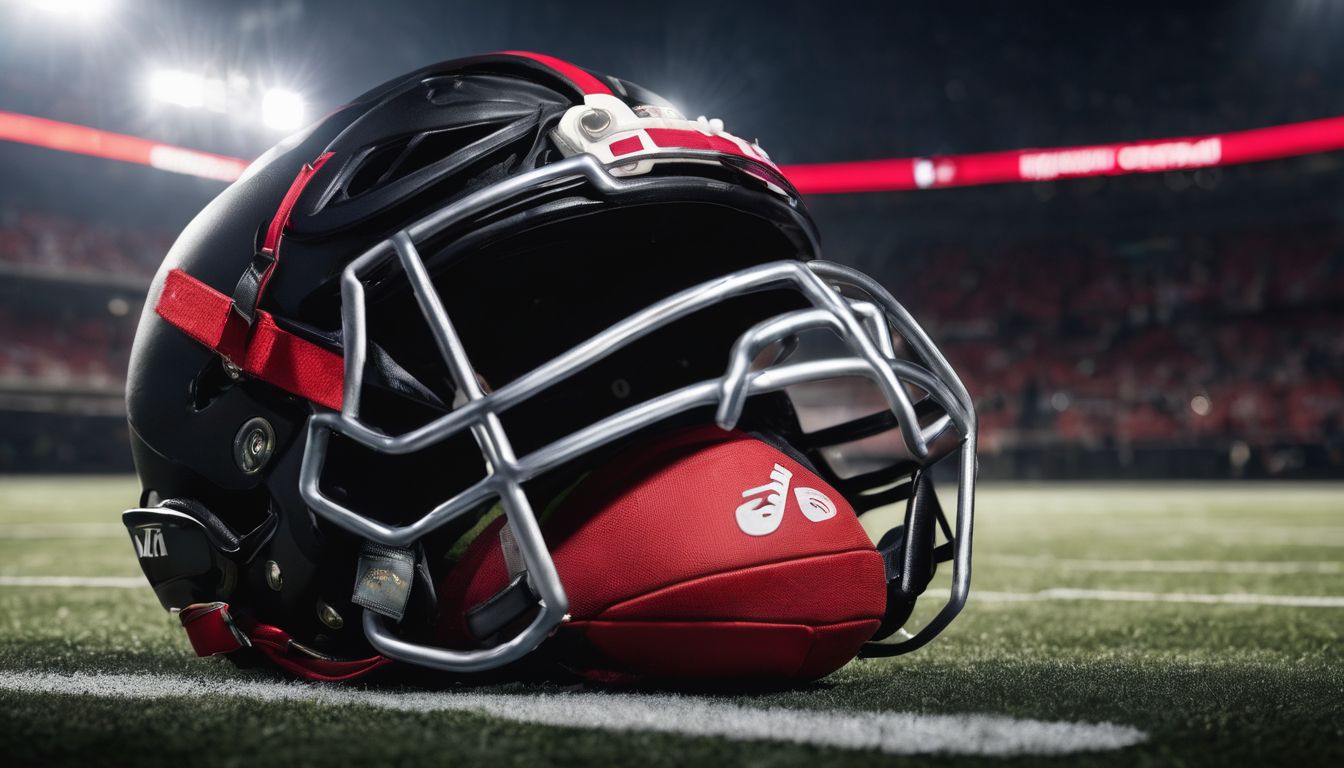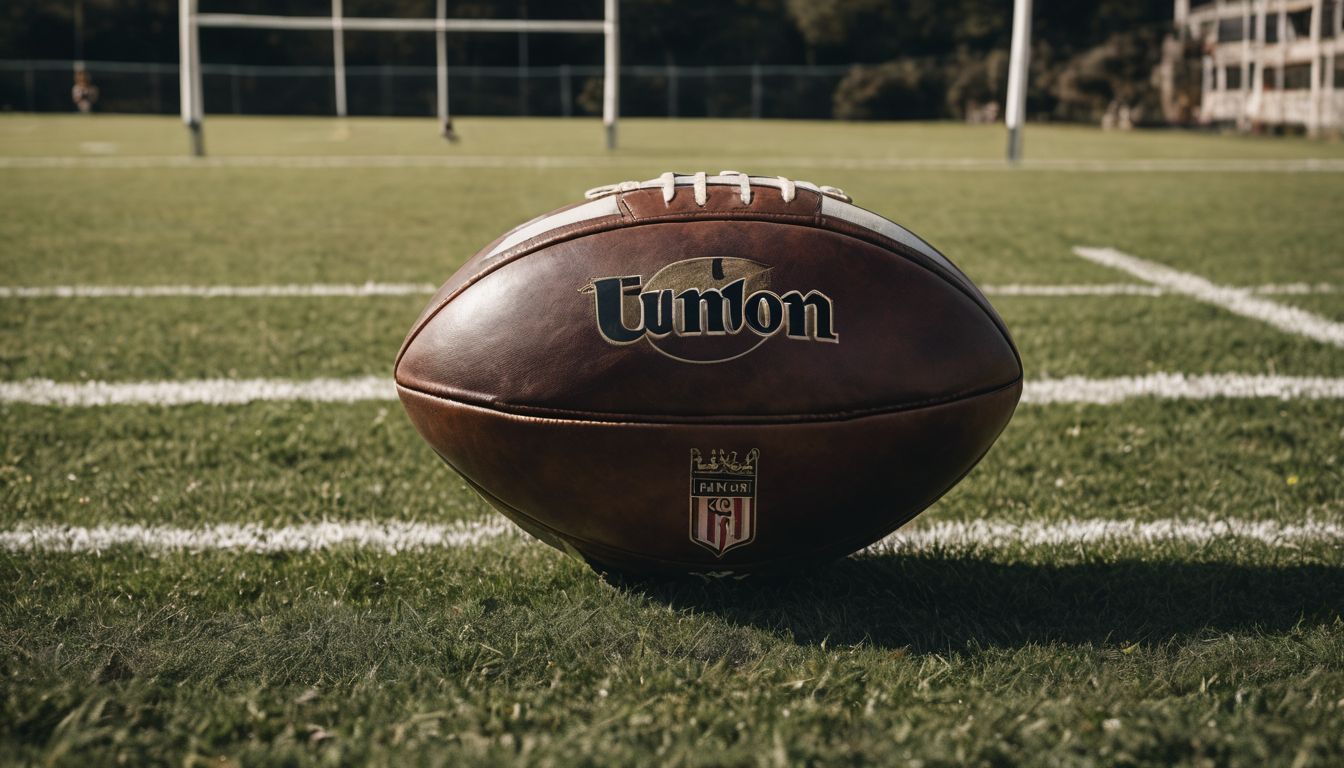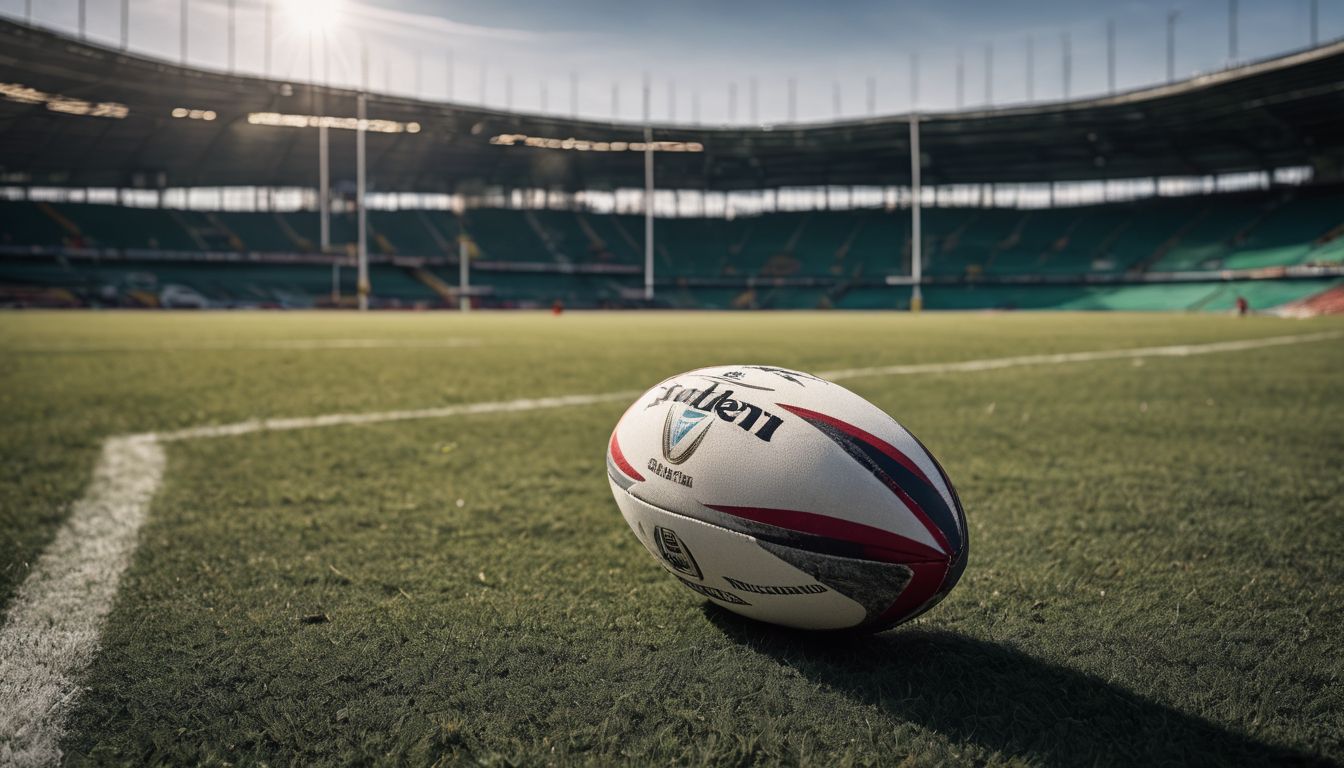Are you a rugby fan who wants to understand the pivotal role of centres in the game? Rugby positions can be confusing, but don’t worry – we’ve got you covered. In this blog post, we will break down the responsibilities and duties of inside and outside centres in rugby. So, let’s dive into the world of rugby centres and unravel their essential roles on the field!
Key Takeaways
- Centres are crucial in rugby for linking the forward pack and the backline, helping to create a fluid game by transitioning between defence and attack.
- Inside centres (second five – eighths) must have solid kicking abilities and be strong enough to break through defences while setting up plays; they usually weigh between 190 to 220 pounds.
- Outside centres focus on speed and agility, exploiting gaps with quick maneuvers; they have an average height of around 6 feet tall with similar weights to inside centres.
- Both inside and outside centres need excellent decision – making skills; they decide when to pass or penetrate the opposing line during open play, contributing significantly in both offensive and defensive roles.
- Legendary players like Ma’a Nonu (inside centre) and Brian O’Driscoll (outside centre) exemplify how influential these positions can be, demonstrating remarkable contributions to their teams’ successes.
Brief overview of the blog topic
Centres in rugby hold the vital role of linking forwards and backs, crafting a smooth flow between brute strength and agile strategy. With their positions fixed squarely in the midfield battleground, they are pivotal to both defense and offense maneuvers.
Inside centres combine power with tactical acumen to break through opposition lines or act as a decoy, setting up game-changing plays. They might even step into the kicker’s boots if needed.
Their counterparts, outside centres, bring speed to the fray, skilfully dodging tackles and weaving past defenders.
Rugby teams lean on their centres for that crucial thrust forward or an impenetrable wall against advancing foes. As these players patrol the midfield territory, their actions often dictate whether their team will surge ahead or stall under pressure.
Balancing short bursts of intensity with strategic positioning enables inside centres to challenge the gain line aggressively while outside centres’ swiftness ensures quick exploitation of any gaps in the defensive line.
Mastery over these roles is not just impressive; it’s essential for clinching victories on the field.
The Different Positions in Rugby
Rugby has different positions with specific roles, including forwards and backs. Each position contributes to the overall teamwork and success of the team.
You are currently viewing a placeholder content from Default. To access the actual content, click the button below. Please note that doing so will share data with third-party providers.
More InformationExplanation of positions and their roles
Centers in rugby union are pivotal players, bridging the gap between the brute strength of forwards and the speed of wingers. They’re smack in the midfield, making them essential for a smooth transition from defence to offence.
Inside centers mix physical prowess with tactical smarts to disrupt opposing defenses. Often acting as secondary kickers, they’re masters at short-range charges that help gain valuable ground, akin to fullbacks in football.
Outside centers boast agility and pace, swooping into gaps or skirting around tackles. Their swiftness makes them perfect for slicing through defensive lines and offering crucial support to wingers on counter-attacks.
With their eyes always on breaking past opponents, these players hold keys to unlocking tight game situations through sudden bursts of acceleration or strategic positioning far from scrum chaos.
Both roles require an intricate understanding of teamwork dynamics and the skills necessary for launching robust offensive strategies while reinforcing defensive solidity.
The responsibilities of forwards and backs
Forwards in rugby are typically larger players responsible for the physical aspects of the game, such as scrummaging, rucking, and mauling. They play a crucial role in winning possession from set pieces, while also providing support to ball carriers during open play.
On the other hand, backs are usually smaller and faster players who focus on running with the ball and scoring tries. They are often skilled kickers as well and must be capable of quickly transitioning between attack and defense.
In addition to their respective roles in set pieces and open play, forwards tend to exert more power and control close to the action. Conversely, backs rely on speed and agility towards operating further away from these situations.
The Role of the Inside Centre
The inside centre, also known as the second five-eighth, is typically a powerful and skilful player. They are key in setting up attacking plays from set pieces like scrums and lineouts.
You are currently viewing a placeholder content from Default. To access the actual content, click the button below. Please note that doing so will share data with third-party providers.
More InformationDefinition and alternative names
The inside centre, also known as the second five-eighth in some regions, is a pivotal position that demands versatility. This player must have strong kicking abilities and be adept at making quick decisions under pressure.
The inside centre’s role involves breaking through the defensive line while setting up attacking opportunities for their team.
An outside centre in rugby may also be referred to as a wing-centre or simply “centre.” These players are typically faster and agile, essential for executing dynamic plays during open play.
Average size of inside centres
Inside centres in rugby typically have an average height of around 5 feet 11 inches to 6 feet, and a weight ranging from 190 to 220 pounds. Their size enables them to effectively carry out their role as a powerful attacker and solid defender in the midfield.
This combination of height and weight allows inside centres to be physically imposing, making it challenging for opponents to tackle them. Their robust build also facilitates their involvement in scrums and lineouts, adding strength and stability to set-piece plays.
Responsibilities in scrums and lineouts
The inside centre, with average size and weight considered, plays a crucial role in scrums and lineouts. During scrums, the inside centre acts as a support player for their fellow forwards to ensure possession of the ball.
They engage in the scrum to provide strength and stability for their team while helping to secure possession once the ball is put into play. In lineouts, the inside centre often serves as an option for receiving a throw-in from a teammate.
Their agility and quick decision-making are essential in securing possession or setting up attacking moves from set-piece plays.
In both scrums and lineouts, the inside centres’ responsibilities include providing support to their teammates, securing possession of the ball, and making split-second decisions to either retain control or launch strategic attacks on opposing teams.
The Role of the Outside Centre
The outside centre is typically larger and more powerful, responsible for making important tackles and setting up attacking plays in open play. Discover the key responsibilities and skills of this crucial position in rugby and learn about some of the top players who have excelled in this role.
You are currently viewing a placeholder content from Default. To access the actual content, click the button below. Please note that doing so will share data with third-party providers.
More InformationAverage size of outside centres
Outside centres in rugby are typically known for their speed and agility. They often have an average size of around 6 feet tall and weigh between 200-220 pounds. This combination of height and weight enables them to be strong enough to break through tackles yet nimble enough to manoeuvre quickly on the field, making them effective in both offensive and defensive plays.
These physical attributes allow outside centres to cover a large area of the pitch while also being able to evade opposing players during open play. The size and speed of these players make them crucial components in effectively linking up with wingers, enabling successful attacking movements down the field.
Next, let’s explore the responsibilities of outside centres during open play.
Responsibilities in open play
The centres in rugby play a crucial role in open play, with the outside centre focusing on using speed and agility to exploit gaps in the opposing team’s defense. They are responsible for creating attacking opportunities by making quick decisions and executing effective passes to support their teammates.
Simultaneously, the inside centre strategically aims to break through the defensive line using power and precise footwork. Their primary focus is on gaining ground and setting up scoring opportunities for the team.
Centres must possess strong decision-making skills as they gauge when to pass or carry the ball further downfield while constantly scanning for potential gaps or weaknesses in the opposition’s defensive structure.
These players need to be adaptable, having both offensive and defensive capabilities during open play to ensure that they contribute effectively across all aspects of the game.
Notable Players in the Centre Position
Some notable inside and outside centres include Brian O’Driscoll, Ma’a Nonu, Manu Tuilagi, Jean de Villiers, and Conrad Smith. Want to learn more about their impact on the game? Keep reading!
Famous inside and outside centres
Some notable inside centres in rugby history include Ma’a Nonu, who is known for his powerful running and strong defense. Another famous inside centre is Tim Horan, celebrated for his exceptional handling skills and tactical awareness on the field.
Outside centres like Brian O’Driscoll stand out for their agility and ability to create opportunities for wingers with their strategic positioning and quick decision-making. Will Greenwood is also renowned as an outside centre, appreciated for his vision and precise passing, making him a valuable asset in breaking through defensive lines.
These legendary players have left enduring marks on the sport with their remarkable skill sets, contributing significantly to their teams’ successes throughout their careers.
Conclusion
In conclusion, the centres in rugby play a crucial role in both attack and defense, linking the forwards and backs, setting up attacking opportunities, breaking through defensive lines, and contributing to the overall performance of the team.
Understanding their responsibilities is essential for any rugby fan or player.
Summary of the key points discussed in the blog
The role of the centers in rugby is pivotal for team success. Inside centres are often relied upon as backup kickers and play a crucial role in setting up attacking plays to break through the defensive line.
On the other hand, outside centres stand back during scrums, observing and positioning themselves strategically to support wingers in open play. Both inside and outside centres are integral in linking forwards and backs, playing a vital part to ensure effective cohesion between the two.
Their distinct roles within set moves contribute significantly to the team’s offensive strategies, making them essential assets on the field.
FAQs
1. What do centers do in a rugby team?
Centers in rugby have the job to attack with powerful runs and defend against opposing players, often linking plays between the forwards and backs.
2. How do centers work with the flyhalf?
The flyhalf passes the ball to centers, setting them up for strategic moves or creating space on the field by drawing defenders away.
3. Can centers score tries in rugby league matches?
Yes, they can! Centers often run fast and dodge tackles to score tries during rugby league games.
4. Are there different types of centers in rugby?
Rugby typically has two types of centers: inside center, closer to the scrum, and outside center who generally receives more open space to run into.
















